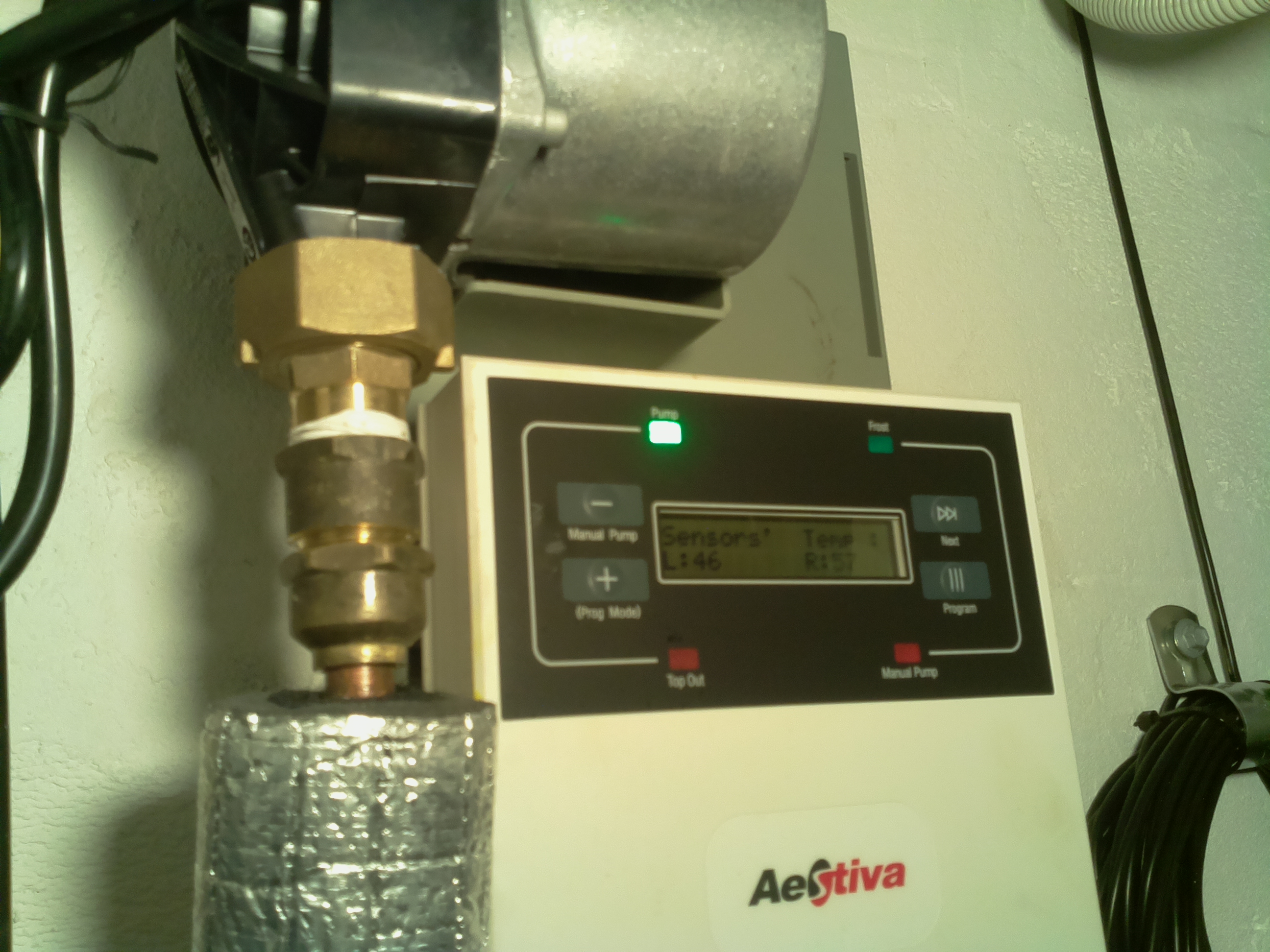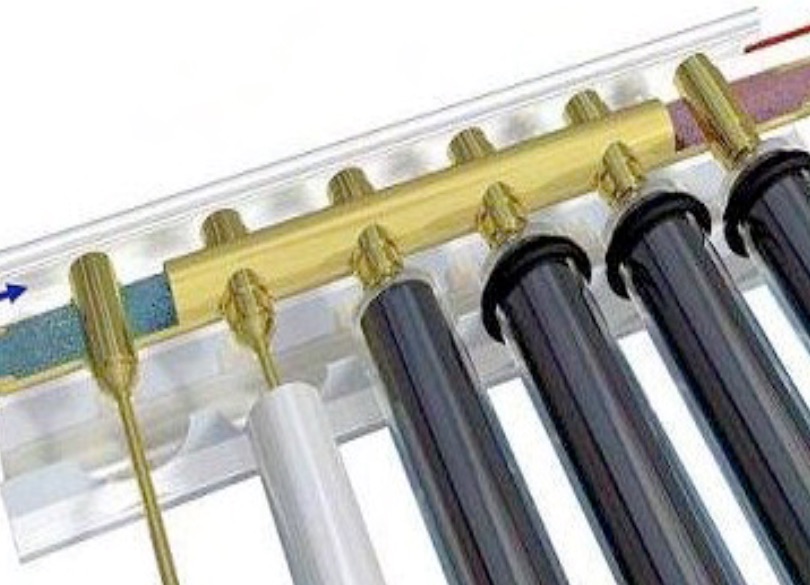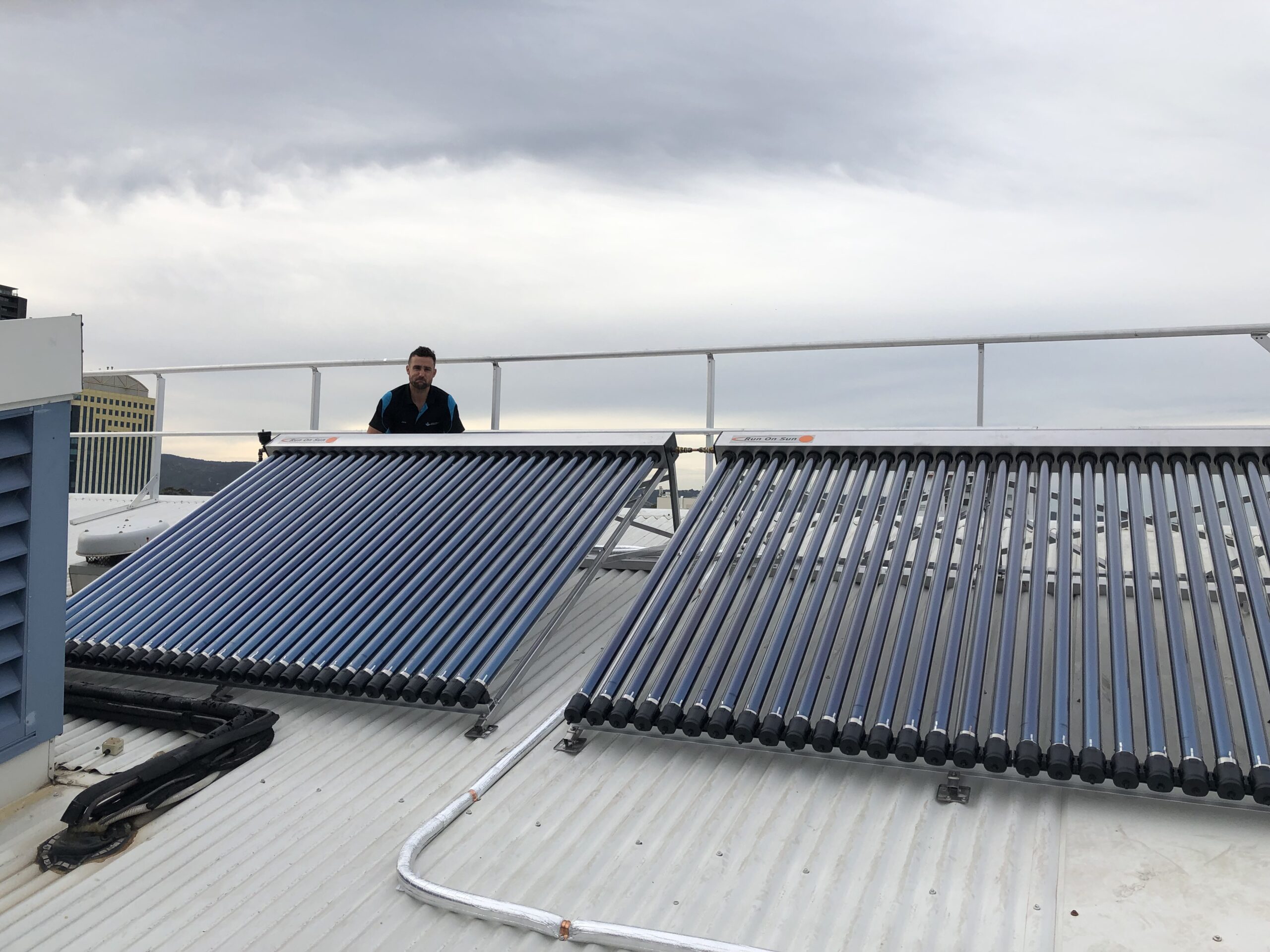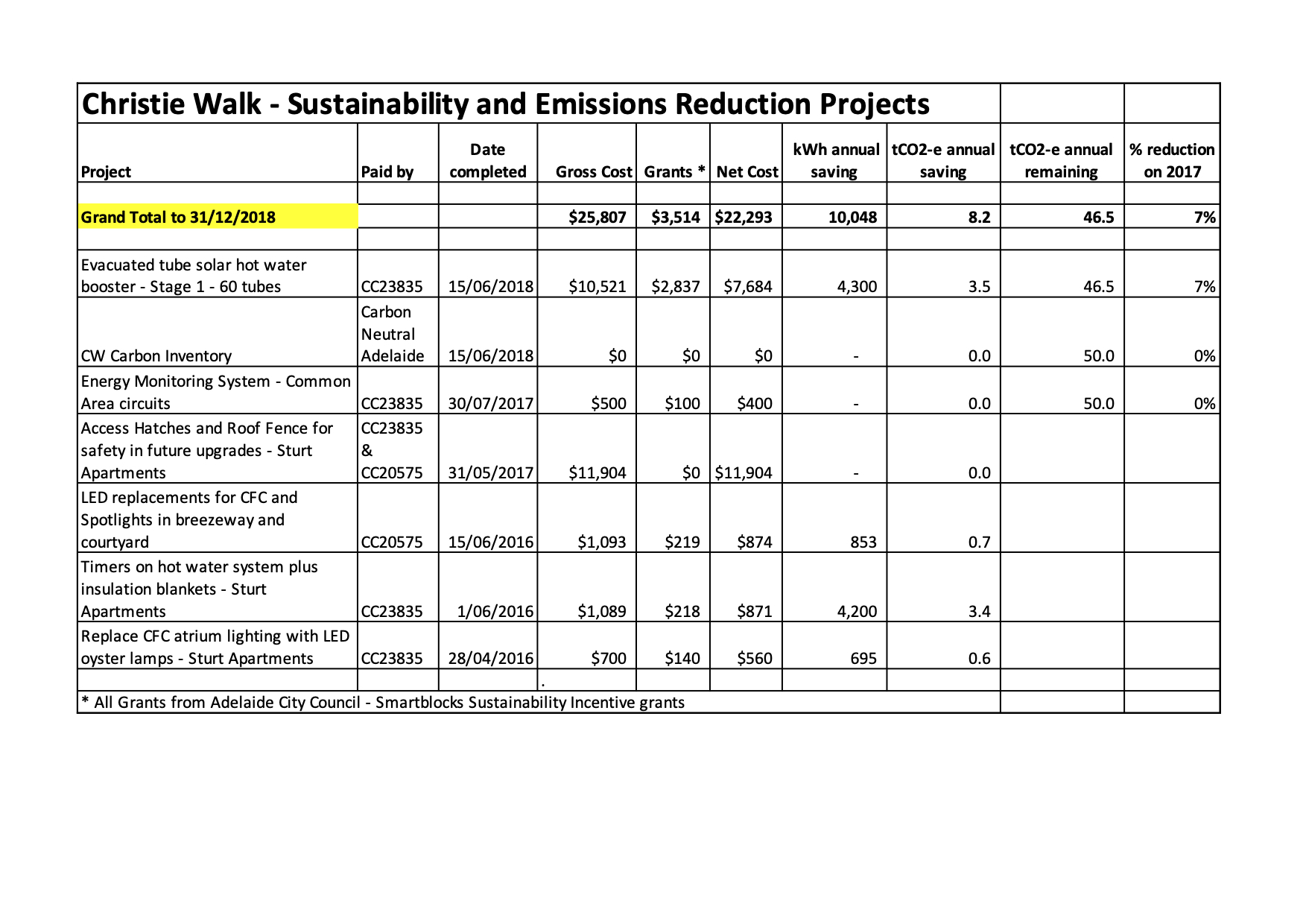Adventures with an environment-conscious inner-urban community
May 2018
We started investigating the retrofit option for our hot water system: installing solar collectors as boosters to our existing heat pump hot water. One company stood out as a solid option: RunOnSun, based in the Northern Rivers region of NSW. Their website wouldn’t win a Webby Award for design, but the content is comprehensive and very educational. MD Andrew Butterworth has spent more than a decade applying Sydney University research on evacuated tube solar hot water and finessing it for efficiency and robust performance. The fixings supplied by RunOnSun are robust too; more than adequate to secure the system in cyclone conditions.
We decided to split the retrofit project into two stages. Stage 1 – 60 evacuated solar collector tubes – would be evaluated before moving onto Stage 2 – an additional 48 evacuated tubes.
We finalised the Stage 1 design, ordered the equipment from RunOnSun, and selected Jack’s Plumbing & Gas to install the system. Jack was super-efficient and professional and we commissioned the finished system on 15th June 2018.
How an evacuated tube solar collector works
Here’s a quick outline:
- A smart controller monitors
- the output temperature of the solar collectors on the roof.
- the temperature of stored water at the bottom of the heat-pump storage tanks.
- When the temperature on the roof is 8 degrees C higher than in the tanks, a circulating pump turns on to move the solar-heated water from the roof units down into the hot water system.
- Pumping continues until the temperature difference drops to 2 degrees.
- The process repeats.

The evacuated tubes are cleverly designed and actually incorporate two vacuums:
- There’s a vacuum between the outer and inner layers of glass.
- At the centre of the tube is an evacuated copper heat pipe which contains a small amount of distilled water. The vacuum enables steam production at temperatures as low as 25 degrees C. The steam rises to the top of the tube where the heat is transferred into the manifold.
- For a detailed explanation, download the file below.

Subsequent evaluation of the performance of the solar boosters confirms that we are on track to enjoy an annual reduction of 4,300kWh in power usage of the heat pump system.

End of 2018 Carbon Emissions Summary
- Baseline at end of 2017 = 50tCO2-e annually (Refer: Episode 2 – Doing a carbon inventory)
- Abatement project 2018 (Evacuated tube solar hot water booster – Stage 1 – 60 tubes) = 3.5tCO2-e reduction.
- Annual emissions remaining at end of 2018 = 50 – 3.5 = 46.5tCO2-e. Yay! Progress.

Lessons learnt along the way:
- The only thing that would have improved this installation would be if the smart controller unit had on-board Wi-Fi. Without that we’ve had to add a Raspberry-Pi micro-computer with a camera to enable remote visual monitoring of the system on demand.
- Emissions abatement is very hard work; even with this significant project, we have only reduced our 50 tonnes of emissions down to 46.5 tonnes.
- Using solar hot water collectors is generally better value than using the equivalent roof area for additional PVs:
- Typically, per square metre, power capacity is:
- Solar hot water collectors = 0.4kW/m2
- PVs = 0.2kW/m2
- Additionally, solar hot water collectors provide time shifting, through hot water storage for use of the energy collected after sunset. They’re like batteries, but use your existing storage tank instead of an additional expensive battery.
- On the downside, there can be some energy losses from the hot water storage tanks, and in our case in the recirculating main that snakes through the apartment block.
- Typically, per square metre, power capacity is:
- Evacuated tube solar hot water collectors can be significantly more efficient than flat plate solar hot water collectors (Refer: Solar hot water collectors efficiency comparisons) Examples for Adelaide:
- Summer – evacuated tubes 132% more efficient
- Winter – evacuated tubes 52% more efficient
- Evacuated tubes perform well after rain showers because the cooling effect of the evaporating water on the evacuated tubes does not affect the efficiency of the tubes, whereas the cooling of the flat plates reduces heat collected whilst the plates are heating up again.
You can continue reading of our adventure with Episode 4 – Major PV upgrade.
It’s part of our special series:
Aiming beyond NetZero at Christie Walk – Adventures with an environment-conscious inner-urban community.


Leave a Reply